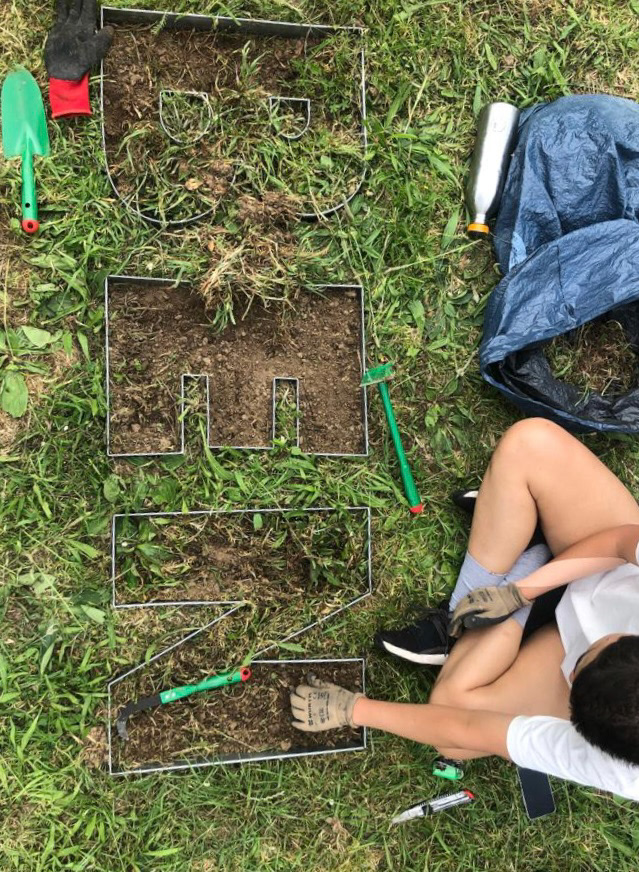In 1928, ten years after the dissolution of the German colonial empire, a large colonial exhibition took place in the Gewerbehalle in Stuttgart. The exhibition aimed to communicate the industrial and economic development achieved under German occupation, featuring a diverse range of products imported from the colonies, photographic documentation, real-size houses, landscape paintings, and objects, and also showcasing peoples from the colonised lands, their rituals, work, cultural objects and tools. The exhibition was accompanied by the so-called ethnological shows.
The Colonial Exhibition in 1928 left almost no visible traces. The most precise document discovered during this research is the text used to guide visitors throughout the exhibition. This text describes the exhibition's spaces and is characterized by numerous levels of spatial displacement. The artwork NEBEN DEM KAKAOFELD seeks to initiate a conversation about the narratives behind colonial thinking and colonial spaces in Stuttgart by marking the location where the Colonial Exhibition in 1928 took place with text.
The quote on the meadow, west of the university library, was extracted from the original exhibition's guide. The letters were handcrafted from a steel landscape edging system and hammered into the soil. The first layer of grass and its roots were manually removed from the area inside the letters.
By fracturing and re-materializing the original text, the earlier symbolic structure of colonialist thinking is brought back to the forefront. Simultaneously, once removed from their context, the words expand from a contemporary metaphorical level, opening up different spatial and symbolic threads that can be read across various time scales. Through fracture, language loses its descriptive character, becoming more open and expansive in scope.




Photo: Patrick Schneider - schneiderpatrick.com

Photo: Patrick Schneider - schneiderpatrick.com

Photo: Patrick Schneider - schneiderpatrick.com

Alongside the intervention, the research on the colonial past of Stuttgart and its implications was showcased as a growing archive at the Foyer of the University Library, marking the original entrance of the Gewerbehalle and bringing forward a story not so often told.
At the root of the imperialist practice of invasion and domination of lands through the violent creation of artificial borders, is a narrative of capital expansion and progress based on the exploitation of resources and the illusion of separation from one’s space to that of the other. The artwork is a reminder of the fragility of language and the fictive character of history, exemplifying the paradox between spatial ephemerality and historical traces.






Concept and project management: Lídia Chaves / Production: Lídia Chaves, Clara Gaenslen, Artem Maier, Mohammed Seidan, Amelie Theurer, Julius Elleby, Smitha Chirakkal / Supervision: Sandra Oehy, Leonard Herrmann, Piotr Fabirkiewicz / IGmA Universität Stuttgart / IBK2 / With the support of Pirmin Wollensak, Louis-Baptiste Bertrand, Felix Hardwig, Jannis Haueise, Patrick Schneider, Maik Stricker, Michael Preisack, IDG - Institut für Darstellen und Gestalten, Universitätsbibliothek Stuttgart, Nadine Saidu, Theresa Kohl / Funded and supported by: Kulturamt Stuttgart, Koordinierungsstelle für Erinnerungskultur / This project was realised as part of the IBA'27 Festival 1 / Groundbreaking Stadtgarten